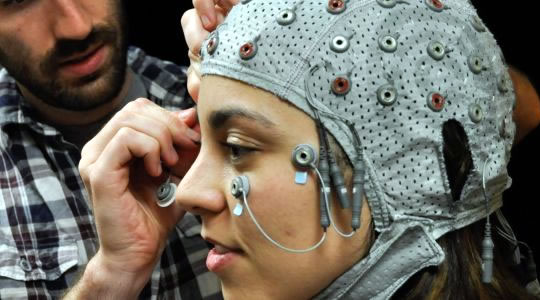Source: PSYBLOG - Jeremy Dean, 11/15/13

Every day, when you open your eyes in the morning, there is a huge flood of visual information from the external world into your mind.
Your brain edits this flood down to a trickle of things that are highly relevant: Where is the dressing-gown? Where is the curtain? Where is the door?
The rest of it–the state of the carpet, the shadows on the ceiling–all gets ignored.
Or does it?
How much processing does the brain allocate to things you’re not consciously aware of? What does ‘it’ see that ‘you’ don’t? (Obviously ‘you’ are ‘it’, but let’s not get into that!).
Fascinating new research, published in the journal Psychological Science, addresses this question.
Sanguinetti et al. (2013) had participants looking at the silhouettes of objects in the centre of a screen, while there were other shapes around the outside.
It’s like the everyday situation where you are concentrating on something, but there are all kinds of other objects and shapes in your peripheral vision.
By monitoring their brainwaves, the researchers were able to determine whether participants were processing these peripheral objects.
People don’t usually take much notice of what’s going on in their peripheral vision because they are concentrating on what they are looking at.
The same was true in this study: participants were not consciously aware of the peripheral shapes.
And yet, the electrical activity they measured suggested that their brains were processing these peripheral shapes for meaning.
This goes against how many theorists have suggested that vision works. Professor Mary Peterson explained:
“Many, many theorists assume that because it takes a lot of energy for brain processing, that the brain is only going to spend time processing what you’re ultimately going to perceive. But in fact the brain is deciding what you’re going to perceive, and it’s processing all of the information and then it’s determining what’s the best interpretation.”
Naturally, the brain edits information coming from the eyes, because only a portion of it is useful for us.
It’s like a film director who doesn’t bother showing you the hero going to sleep or brushing his teeth.
To follow the story, what you need is the salient details, and that is what the brain is trying to give you: the edited version of the most useful visual facts.
However, what this study suggests is that even information that isn’t that useful or relevant is still being processed in the brain for meaning.
The study is a fantastic reminder that what we see is the result of an extremely complicated editing and filtering process.
What we actually perceive is just what the brain thinks will be most useful to us. But, while we don’t perceive the rest, it seems much of it is still being processed unconsciously.
Image credit: Patrick McArdle/UANews

